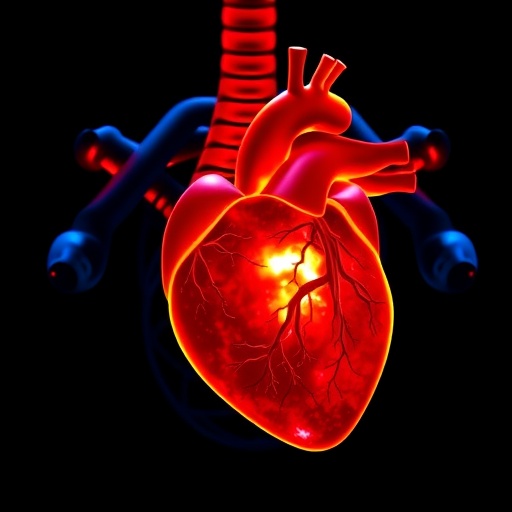A Ludwig Cancer Research study has uncovered a new mechanism by which cancer cells evade destruction by the immune system. The paper, led by Camilla Jandus of the Lausanne Branch of the Ludwig Institute for Cancer Research, describes how immune cells known as group 2 innate lymphoid cells (ILC2s) are recruited by leukemic cells to suppress an essential anticancer immune response. The study, which appears in the current issue of Nature Communications, further suggests that the newly discovered immunosuppressive axis likely holds sway in other types of cancer — and that it might be disrupted by therapies already in use to treat other diseases.
"ILCs are not very abundant in the body but, when activated, they secrete large amounts of immune factors," says Jandus, an investigator at the Ludwig Lausanne Branch. "In this way, they can dictate whether a response will be pro-inflammatory or anti-inflammatory"–whether it stimulates an immune attack or suppresses it.
These recently discovered cells come in three flavors — ILC1, 2 and 3 — and have been shown to play a role in inflammation and autoimmune diseases. Their role in cancer has, however, remained unclear.
To address that question, Jandus and her colleagues began with the observation that one subtype of the cells, ILC2s, are abnormally abundant and hyperactivated in patients diagnosed with acute promyelocytic leukemia (APL). Because this particular blood cancer can be treated and cured, the researchers could examine ILC2 immunology in patients when they had active APL and compare it to that of patients in remission.
"Our analyses suggest that in patients with this leukemia, ILC2s are at the beginning of a novel immunosuppressive axis, one that is likely to be active in other types of cancer as well," says Jandus.
ILC2s respond to certain metabolites, in particular one known as prostaglandin D2 (PGD2), and to a protein named B7H6 that is expressed on the surface of other cells. Jandus and her colleagues found that APL cells secrete large quantities of PGD2 and express high levels of B7H6 on their surface. Both of these molecules bind to receptors on ILC2s, activating them and prompting them to secrete an immune factor known as interleukin-13 (IL-13).
The IL-13 secreted by the ILC2s, in turn, switches on and expands the population of monocytic myeloid-derived immune cells (M-MDSCs), which are potent suppressors of immune responses. The activation of M-MDSCs dramatically inhibits the immune system's killer T cells, which would otherwise attack the leukemic cells.
The researchers tested these findings in a mouse model of APL, and established that mice with APL, like patients, displayed abnormal activation of ILC2s and M-MDSCs.
Most significantly, depleting ILC2s in the mice or blocking the activity of IL-13, PGD2 or the B7H6 receptor restored anti-cancer immunity and extended the survival of the leukemic mice.
"We also found that this immunosuppressive axis may be operating in other types of cancer, in particular prostate cancer," says Jandus.
She and her colleagues show that PGD2 secretion is elevated in prostate cancer cell lines. ILC2 levels are abnormally high in patients with the cancer, and increase with advancing disease, accompanied by increased levels of MDSCs. This suggests the immunosuppressive axis controlled by ILC2s might be targetable in other less curable cancers.
Notably, antibodies against IL-13 and inhibitors of PGD2 are already in clinical use for other diseases, while antibodies that interfere with B7H6 binding to its receptor are in clinical development. If the immunosuppressive axis discovered in this study is found to be in play in less curable cancers, its disruption could be readily evaluated in clinical trials as an adjunct to immunotherapies.
Jandus and her colleagues are now pressing ahead with their examination of ILCs in cancer. "We believe that some ILCs, like ILC2s, might suppress immune responses, while others might stimulate them," says Jandus. "That's what we are investigating in other types of tumors now."
###
This study was supported by Ludwig Cancer Research, the Swiss National Science Foundation, Fondazione San Salvatore, ProFemmes UNIL, Fondation Pierre Mercier pour la Science, the Swiss Cancer League, the Novartis Foundation for Medical-Biological Research and the Foundation for the Fight against Cancer.
Camilla Jandus is also the Swiss National Science Foundation (SNSF) Ambizione Lecturer in the Department of Fundamental Oncology at the University of Lausanne.
About Ludwig Cancer Research
Ludwig Cancer Research is an international collaborative network of acclaimed scientists that has pioneered cancer research and landmark discovery for more than 40 years. Ludwig combines basic science with the ability to translate its discoveries and conduct clinical trials to accelerate the development of new cancer diagnostics and therapies. Since 1971, Ludwig has invested $2.7 billion in life-changing science through the not-for-profit Ludwig Institute for Cancer Research and the six U.S.-based Ludwig Centers. To learn more, visit http://www.ludwigcancerresearch.org.
For further information please contact Rachel Steinhardt, [email protected] or 1-212-450-1582.
Media Contact
Rachel Steinhardt
[email protected]
212-450-1582
@Ludwig_Cancer
http://www.licr.org




